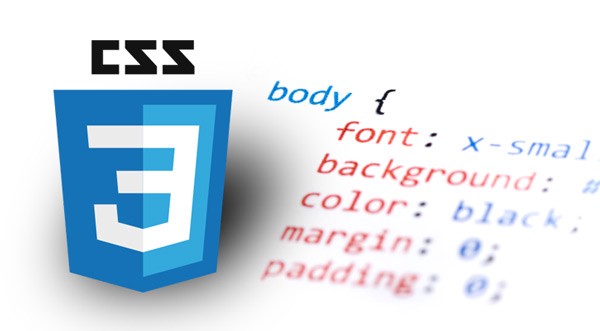Shop detail

CSS – The Complete Guide
Description
About CSS
Cascading Style Sheets allows you to create great-looking web pages, but how does it work under the hood? This article explains what CSS is with a simple syntax example and also covers some key terms about the language.
In the Introduction to HTML module, we covered what HTML is and how it is used to mark up documents. These documents will be readable in a web browser. Headings will look larger than regular text, paragraphs break onto a new line and have space between them. Links are colored and underlined to distinguish them from the rest of the text. What you are seeing are the browser’s default styles — very basic styles — that the browser applies to HTML to make sure that the page will be basically readable even if no explicit styling is specified by the author of the page.
However, the web would be a boring place if all websites looked like that. Using CSS, you can control exactly how HTML elements look in the browser, presenting your markup using whatever design you like.

What is CSS for?
As we have mentioned before, CSS is a language for specifying how documents are presented to users — how they are styled, laid out, etc.
A document is usually a text file structured using a markup language — HTML is the most common markup language, but you may also come across other markup languages such as SVG or XML.
Presenting a document to a user means converting it into a form usable by your audience. Browsers, like Firefox, Chrome, or Edge , are designed to present documents visually, for example, on a computer screen, projector, or printer.
CSS can be used for very basic document text styling — for example, for changing the color and size of headings and links. It can be used to create a layout — for example, turning a single column of text into a layout with a main content area and a sidebar for related information. It can even be used for effects such as animation. Have a look at the links in this paragraph for specific examples.
CSS specifications
All web standards technologies (HTML, CSS, JavaScript, etc.) are defined in giant documents called specifications (or “specs”), which are published by standards organizations (such as the W3C, WHATWG, ECMA, or Khronos) and define precisely how those technologies are supposed to behave.
CSS is no different — it is developed by a group within the W3C called the CSS Working Group. This group is made of representatives of browser vendors and other companies who have an interest in CSS. There are also other people, known as invited experts, who act as independent voices; they are not linked to a member organization.
New CSS features are developed or specified by the CSS Working Group — sometimes because a particular browser is interested in having some capability, other times because web designers and developers are asking for a feature, and sometimes because the Working Group itself has identified a requirement. CSS is constantly developing, with new features becoming available. However, a key thing about CSS is that everyone works very hard to never change things in a way that would break old websites. A website built in 2000, using the limited CSS available then, should still be usable in a browser today!
As a newcomer to CSS, it is likely that you will find the CSS specs overwhelming — they are intended for engineers to use to implement support for the features in user agents, not for web developers to read to understand CSS. Many experienced developers would much rather refer to MDN documentation or other tutorials. Nevertheless, it is worth knowing that these specs exist and understanding the relationship between the CSS you are using, the browser support (see below), and the specs.
About the course
We start at the very basics (What is CSS? How does it work? How do you use it)? and gradually dive in deeper and deeper. And we do this by showing both practical examples as well as the theory behind it.
Getting started with CSS might look easy but there actually is a lot of depth to CSS – hence this course provides different “Tracks” or “Entry points” to exactly meet your demands and reflect you current knowledge level:
- The Basics Track: Start from scratch, learn CSS from the ground up. You start with lecture 1 and simply follow through to the end.
- The Advanced Track: You already know the CSS basics, you know what selectors are and how it works but you want to dive in deeper and learn some advanced features and usages.
- The Expert Track: You got the advanced knowledge, too, but you want to dive into things like Flexbox, CSS Grid, CSS Variables or Sass. This track is for you.
Of course this course offers the theory and practical examples – we’ll build an entire real course project throughout the course – but there also are multiple assignments, quizzes and challenges for you to practice individual concepts taught throughout the course.
Talking about the course project – we’ll build the frontend (no backend) of a fictional web hosting company. We’ll have a starting screen which has different sections, we got a responsive design with an animated side-drawer, we got modals and forms and in general we got a lot of CSS animations, font styles and more!
Course for you, if:
- you started with learning web development and you want to build more beautiful websites
- you already know CSS but want to dive deeper
- you’re using CSS in a trial-and-error manner and want to change this (you should!)